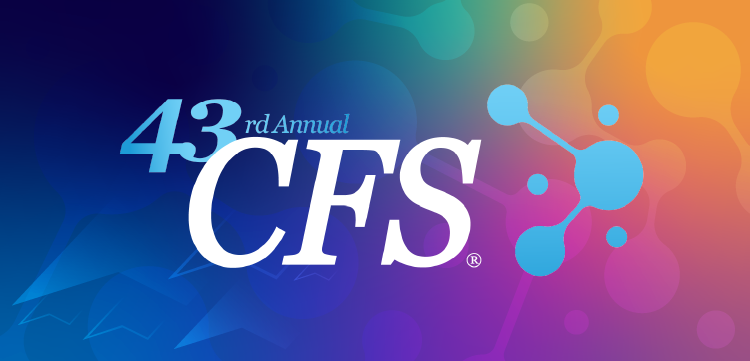
HCV Therapy Demonstrates 98% Sustained Virologic Response at 12 Weeks Post Treatment
Atea Pharmaceuticals' investigational combination treatment of bemnifosbuvir and ruzasvir showed these results after an 8-week treatment regimen.
At the ongoing European Association for the Study of the Liver (EASL) Congress 2025, Atea Pharmaceuticals announced the full results from its phase 2 clinical trial, which showed a 98% sustained virologic response rate at 12 weeks post-treatment (SVR12) in 210 of 215 participants with the regimen in the “Per-Protocol Treatment-Adherent Population,” using an 8-week treatment duration. Additionally, the SVR12 rate was 95% in 245 of 259 trial participants in the “Per-Protocol Regardless of Adherence Population” which included patients who were not treatment adherent (17%).1
“If you look at the more expanded population—that wasn't the primary endpoint—there was a 259 patients, which includes patients that were less compliant to therapy, and still, despite suboptimal compliance, had a 95% cure rate,” said Eric Lawitz, MD, clinical professor of medicine at The Texas Liver Institute, University of Texas Health, San Antonio.
In addition, he explains a majority of hepatitis C patients are different from previous years, and that the Atea trial showed promising results for this population.
“Of the 181 non cirrhotics, 180 were cured…this is really important in 2025 because the burden of hepatitis C is really emerging in the young people who are non cirrhotic and just need an effective treatment,” Lawitz said.
The phase 2 study was conducted in treatment-naïve, chronic HCV-infected patients across genotypes either without cirrhosis (n=238) or with compensated cirrhosis (n=37). Results demonstrated 99% of treatment-adherent patients who were non-cirrhotic and infected with genotypes 1-4 achieved SVR12, demonstrating robust pan-genotypic potency and supporting an 8-week treatment duration in non-cirrhotic patients in the phase 3 program. A 100% SVR12 rate was observed in non-cirrhotic, treatment-adherent patients infected with genotype 3, a historically difficult genotype to treat and cure.1
Phase 3 Trials
Last month, the company announced it had begun its phase 3 trial program, and this will incorporate its C-BEYOND trial, which will be conducted in the US and Canada, and its C-FORWARD trial, an international study. Each trial will enroll approximately 880 treatment-naïve patients, including those with and without compensated cirrhosis.2
The regimen of bemnifosbuvir and ruzasvir will be administered orally once-daily for 8 weeks (in patients without cirrhosis) or 12 weeks (in patients with compensated cirrhosis) while the regimen of sofosbuvir and velpatasvir will be administered orally once-daily for 12 weeks for all patients with or without compensated cirrhosis. 2
The primary endpoint for each trial is HCV RNA < lower limit of quantitation (LLOQ) at 24 weeks from the start of treatment and encompasses sustained virologic response 12 weeks post-treatment (SVR12) in each arm. Measurement at 24 weeks from the start of treatment is to ensure the primary endpoint occurs at the same relative timepoint from the start of treatment in all patients. While C-BEYOND and C-FORWARD are both open-label trials, Atea has put measures and processes in place that are designed to blind Atea personnel to patient treatment assignments. 2
“As you look at hepatitis C antiviral drug development over the years, phase 3 tends to reproduce phase 2 data. Ultimately, you get bigger numbers and statistical significance,” Lawitz said. “Of course, in this phase 2 trial, this was an open label and not a placebo or active, controlled study. In the phase 3 trial, we would expect an active control study, and so my expectations would be that we would see very similar results with bigger numbers.”
About the Therapies
Bemnifosbuvir has been shown in in vitro studies to be approximately 10-fold more active than sofosbuvir (SOF), against a panel of laboratory strains and clinical isolates of HCV GT 1–5. In vitro studies have also demonstrated bemnifosbuvir remained fully active against SOF resistance-associated substitutions (S282T), with up to 58-fold more potency than SOF.2
The pharmacokinetic (PK) profile of bemnifosbuvir supports once-daily dosing for the treatment of HCV. Bemnifosbuvir has been shown to have a low risk for drug-drug interactions. Bemnifosbuvir has been administered to over 2,200 subjects and has been well-tolerated at doses up to 550 mg for durations up to 12 weeks in healthy subjects and patients.2
The other half of the combination, ruzasvir, has demonstrated highly potent and pan-genotypic antiviral activity in preclinical (picomolar range) and clinical studies. Ruzasvir has been administered to over 1,500 HCV-infected patients at daily doses of up to 180 mg for 12 weeks and has demonstrated a favorable safety profile. The PK profile of ruzasvir supports once-daily dosing.2
References
1. Atea Pharmaceuticals Announces Full Results from Phase 2 Study of Regimen of Bemnifosbuvir and Ruzasvir for Treatment of Hepatitis C Virus (HCV) Presented at EASL Congress 2025. May 7, 2025. Accessed May 8, 2025.
https://ir.ateapharma.com/news-releases/news-release-details/atea-pharmaceuticals-announces-full-results-phase-2-study
2. Atea Pharmaceuticals Announces Dosing of First Patient in C-BEYOND, Phase 3 Study Evaluating Regimen of Bemnifosbuvir and Ruzasvir for Treatment of Hepatitis C Virus. Atea Pharmaceuticals press release. April 9, 2025. Accessed May 8, 2025.
https://ir.ateapharma.com/news-releases/news-release-details/atea-pharmaceuticals-announces-dosing-first-patient-c-beyond
Newsletter
Stay ahead of emerging infectious disease threats with expert insights and breaking research. Subscribe now to get updates delivered straight to your inbox.




















































































































































































































































































